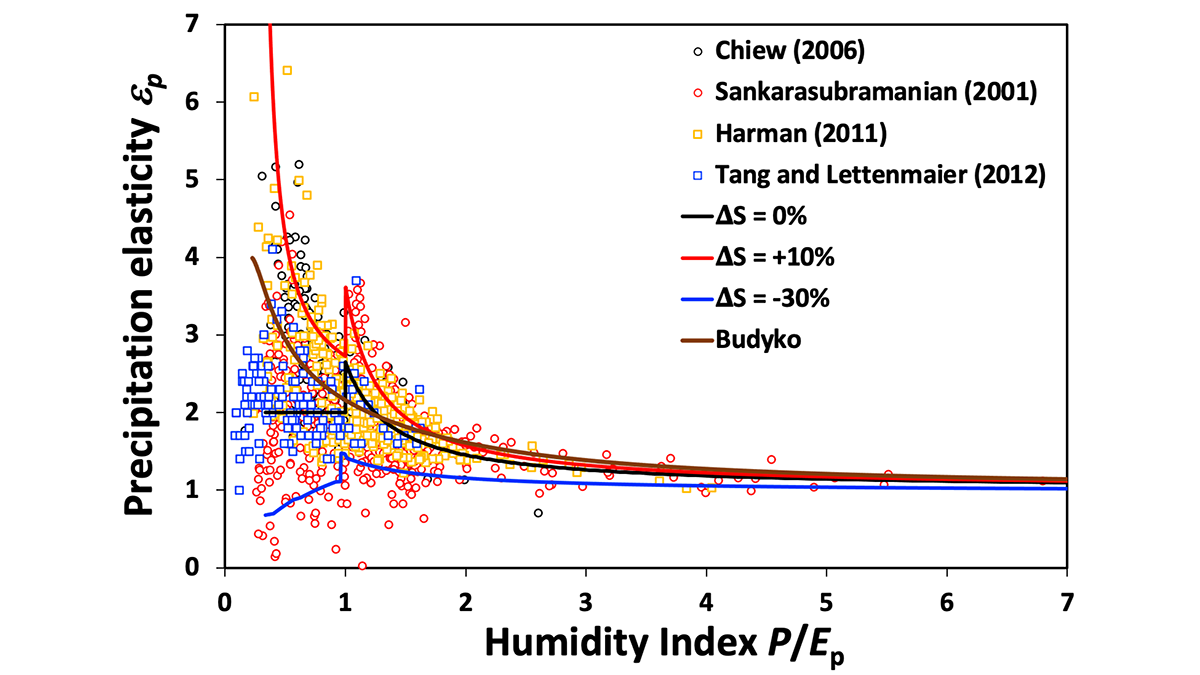Editors’ Highlights are summaries of recent papers by AGU’s journal editors.
Source: AGU Advances
Water is a crucial component of our planet and, therefore, understanding water balance and its modeling at large scales is a fundamental research question. Hunt et al. [2023] provide a new understanding on how terrestrial precipitation splits into the part that is used by vegetation and the fraction that runs off.
The authors introduce a new theoretical development to predict the fractional change in streamflow due to given fractional changes in temperature and precipitation. By comparison with extensive data at global scale it is found that the theory captures the key hydrological features of catchments and therefore sets an innovative ground to better understand water balance. The contribution allows us to predict the impact of changing climatic conditions on the interplay between climate, vegetation, and water resources. The findings open the door to new perspectives in climate change impact assessment.
Citation: Hunt, A. G., Sahimi, M., & Ghanbarian, B. (2023). Predicting streamflow elasticity based on percolation theory and ecological optimality. AGU Advances, 4, e2022AV000867. https://doi.org/10.1029/2022AV000867
—Alberto Montanari, Editor, AGU Advances

